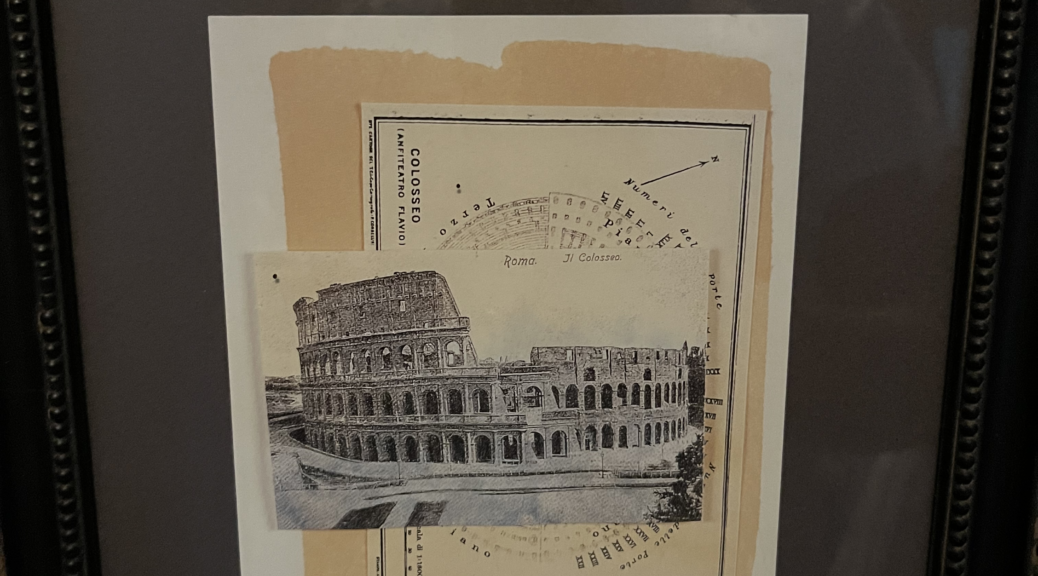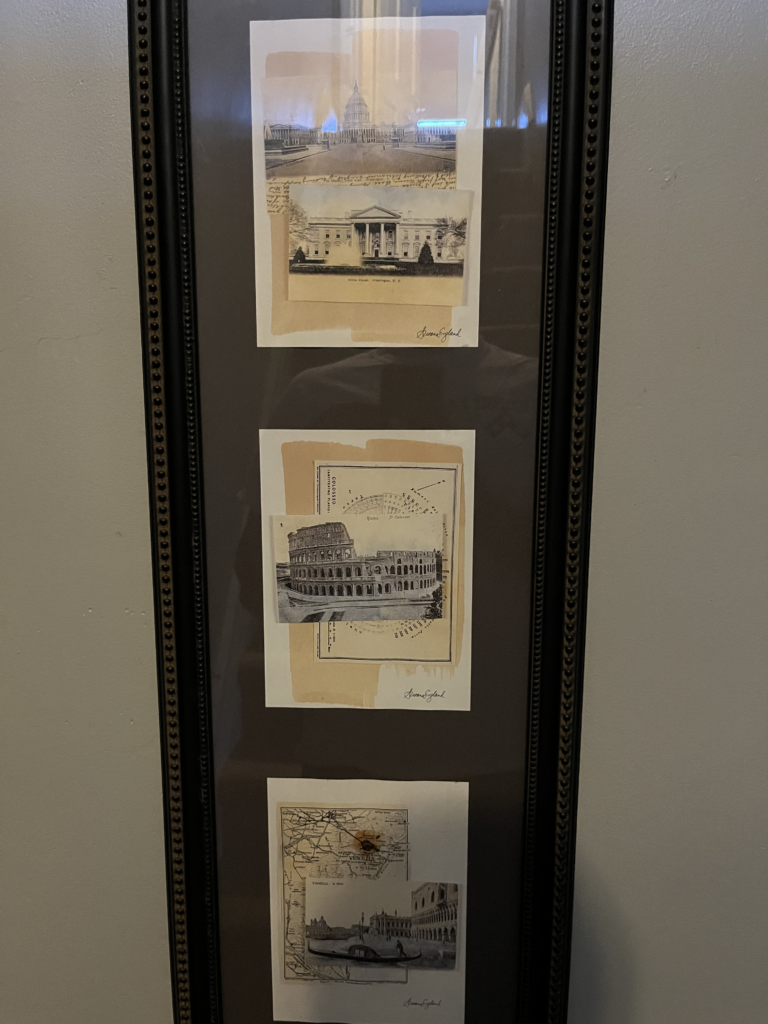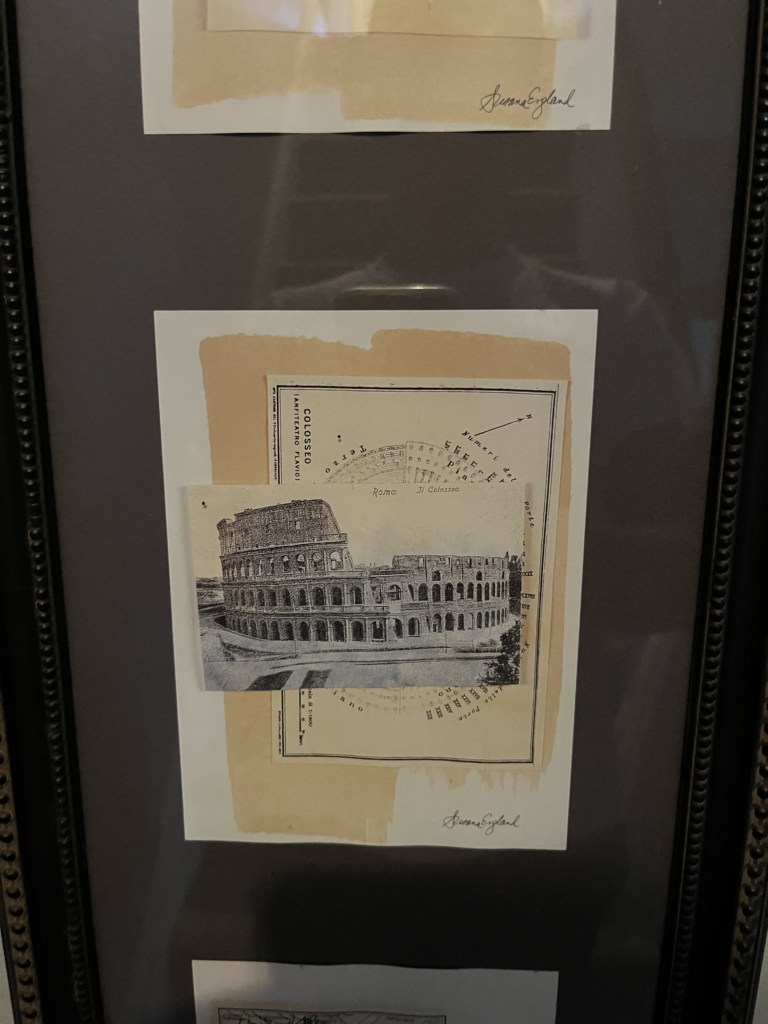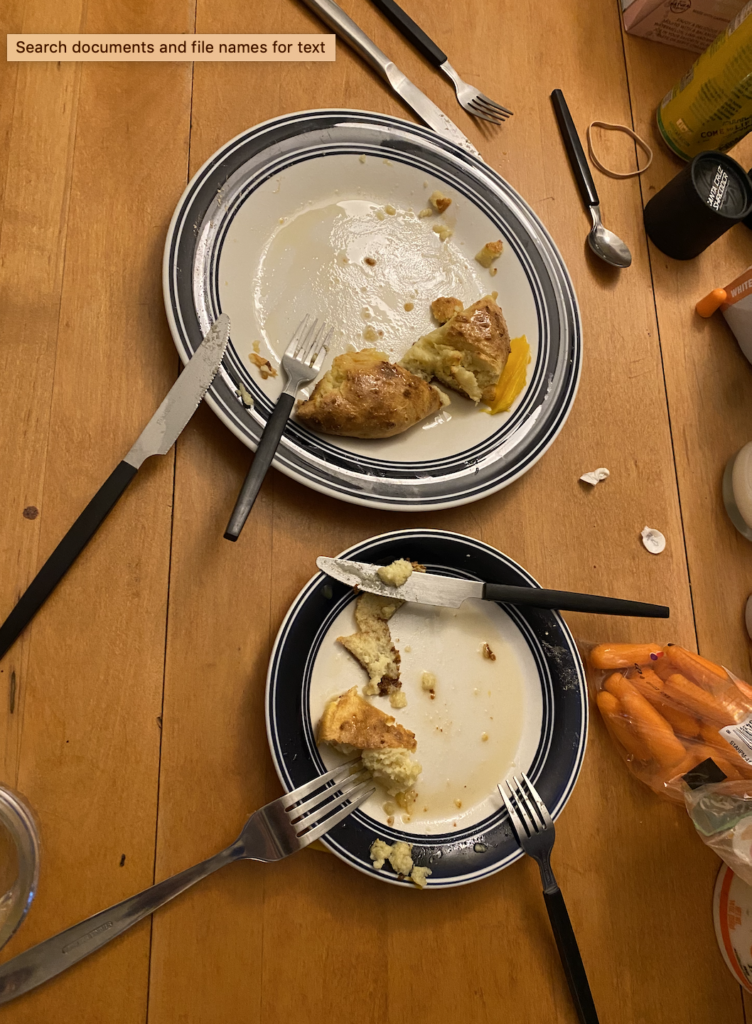
How the Roman Republic is Remembered
I went back home recently to see my family in New Jersey and while I was there I noticed something special about a piece of art that has hung on the wall of our house my entire life. At the base of our staircase hangs a trio of photographs, pictured below. Specifically, out of that trio, the middle image is one of the Colosseum which is found in modern-day Rome, Italy. I have seen this image countless times but, until now, that photo has had no major significance to me so it has gone unnoticed. However, now having a semester of Roman Revolutions behind me, I found myself enraptured by this photo and shocked that I had never noticed it before.
The photo, shown below, is that of the Roman Colosseum, and specifically the side of the Colosseum that highlights the destruction caused by history and time. In reality, a majority of the colosseum is still standing and there is a way to take a photo of the colosseum and capture an image that resembles a body that has survived the battle against time. But instead, the photographer who took this photo decided it would be most fitting to capture an angle of the Colosseum that highlights its destruction and flaws, an image that can help describe the legacy of the Roman Republic as a whole.
As we have learned throughout this course, the Roman Republic was a very prosperous state that grew from a single town with seven hills into a vast Republic that stretched from modern-day Asia to modern-day Europe and down into modern-day Africa. However, as the Republic grew, so did the personal greed of certain individuals and the fragility of the Republic as a whole. Ultimately, the Republic did fall and this fall has been remembered and studied throughout history. The fall of the Republic had a much greater impact than just affecting those who lived in the Republic and their descendants. Instead, the fall of the Republic shaped and defined how history looks back and views Rome and its Republic. Instead of viewing the Roman Republic as a body that was powerful and put together, we now look back on Rome and its Republic as a state that collapsed and failed. Although there was so much greatness to come out of the Republic, all we are left with today is the partially destroyed relics that still stand. As an individual who has never been to Italy or Rome, all I know of Rome is the photo of the Roman Colosseum that has been destroyed.
This photo reminded me that history can be molded and manipulated by the content, stories, and photos that we choose to share. If it weren’t for this course, I would be naive and think that the Roman Republic was a complete failure that fell and left with it evidence of its destruction. I would think that because of the photos that are shared and the stories that are told. However, in reality, this course has taught me how great the Roman Republic truly was. I learned how much their culture still shapes modern-day cultures and traditions, so much so that a photo of the Roman Colosseum found its way into my family’s home. By sharing photos of the side of the Colosseum that was destroyed, we have decided to share the side of history that shows the Roman Republic as a collapsed failure. However, upon further analysis, it can easily be concluded that the Republic was far from a failure. Instead, the Republic should be remembered for its great feats like the advanced engineering of aqueducts and by capturing images of the side of the Colosseum that still stands. With courses like this, the true legacy of the Roman Republic will never be forgotten.










